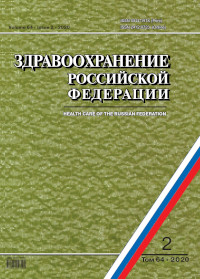The toxicity of the technical product, derived triazolinones
- Authors: Rakitskii V.N.1, Chkhvirkiya E.G.2, Epishina T.M.2
-
Affiliations:
- PhD (Med.), D. Sci. (Med.), professor, Academician of RAS, acting director of the Federal Scientific Center of Hygiene named after F.F. Erisman, Mytishchi, 141014, Moscow Region, Russia. E-mail: pesticidi@fferisman.ru
- Federal Scientific Center of Hygiene named after F.F. Erisman
- Issue: Vol 64, No 2 (2020)
- Pages: 83-87
- Section: TOXICOLOGY (PREVENTIVE, CLINICAL, ECOLOGICAL)
- Submitted: 25.10.2024
- URL: https://hum-ecol.ru/0044-197X/article/view/637521
- DOI: https://doi.org/10.46563/0044-197X-2020-64-2-83-87
- ID: 637521
Cite item
Full Text
Abstract
Introduction. Technical products that are part of pesticides recommended for use in agriculture must undergo a comprehensive sanitary and Toxicological examination, which is the basis for preventing the adverse effects of pesticides on the health of workers and the population, as well as on the sanitary state of the environment. Purpose of research - the study of the biological effect of the technical product derived triazolinthionov, with its repeated oral intake in mammals (rats), justification of the permissible daily dose (DSD) for humans.
Material and methods. Chronic (12 months) experiment was conducted on male rats with a body weight of 200-210 g tested doses: 5.0; 50.0 and 500.0 mg/kg body weight (1 control and 3 experimental groups and 20 individuals each). In the dynamics of the experiment, we observed the condition and behavior of animals, water and food consumption, fixed the timing of death, recorded changes in body weight, physiological, biochemical and hematological parameters.
Results. It was found that the dose of 5.0 mg/kg body weight does not cause significant changes in all studied parameters, doses of 50.0 and 500.0 mg/kg body weight had a polytropic effect on the body of experimental animals.
Discussion. The studied technical product at repeated intake in doses of 50,0 and 500,0 mg/kg of body weight causes changes in the state of the Central nervous system of animals (statistically significant changes in SPP, total activity, path length, rest time), as well as changes in carbohydrate, lipid, and lipoprotein metabolism in the body, as evidenced by statistically significant changes in biochemical and hematological indicators. Consequently, doses of 50,0 and 500,0 mg/kg of body weight have a polytropic effect on the body of male rats and are effective. The dose of 5.0 mg/kg of body weight, when administered in animals of the experimental group in comparison with animals of the control group, there are no changes in all the studied parameters throughout the experiment, is accepted as invalid. On the basis of an inactive dose of 5.0 mg/kg of body weight and a reserve factor of 100, we have scientifically justified DSD for humans at the level of 0.05 mg/kg.
Conclusion. Studies have shown that long-term repeated oral administration of the studied product into the body of animals (male rats) at a dose of 5.0 mg per 1 kg of body weight does not cause statistically significant changes in all the studied parameters, so the indicated dose is invalid. Doses of 50,0 and 500,0 mg/kg MT have a polytropic effect on the body of male rats and are effective. DSD for humans at the level of 0.05 mg/kg is justified based on the inactive dose at the level of 5.0 mg per 1 kg of body weight, established in a 12-month chronic experiment conducted on male rats, and the reserve coefficient of 100 (taking into account the unexpressed specific and long-term effects).
About the authors
V. N. Rakitskii
PhD (Med.), D. Sci. (Med.), professor, Academician of RAS, actingdirector of the Federal Scientific Center of Hygiene named after F.F. Erisman, Mytishchi, 141014, Moscow Region, Russia. E-mail: pesticidi@fferisman.ru
Author for correspondence.
Email: pesticidi@fferisman.ru
ORCID iD: 0000-0002-9959-6507
E. G. Chkhvirkiya
Federal Scientific Center of Hygiene named after F.F. Erisman
Email: noemail@neicon.ru
ORCID iD: 0000-0003-4543-7364
Russian Federation
T. M. Epishina
Federal Scientific Center of Hygiene named after F.F. Erisman
Email: noemail@neicon.ru
ORCID iD: 0000-0003-0331-0701
Russian Federation
References
- Потапов А.И., Ракитский В.Н., Чхвиркия Е.Г. Система обеспечения безопасности пищевых продуктов при применении пестицидов. М.-Ярославль; 2013.
- Potapov А., Rakitski V., Nikolaeva N. New Russian toxicological-hygienic classification of pesticides. Toxicol Lett. 2005; 158(Suppl. 1): 136.
- Тутельян В.А. Безопасность пищевых продуктов – ведущее направление в токсикологии. В кн.: Онищенко Г.Г., Курляндский Б.А., ред. IV Съезд токсикологов России: Сборник трудов. М.: 2013; 39-41.
- Ракитский В.Н. Проблемы и перспективы профилактической токсикологии. В кн.: Онищенко Г.Г., Курляндский Б.А., ред. IV Съезд токсикологов России: Сборник трудов. М.; 2013: 30-3.
- Ракитский В.Н., Чхвиркия Е.Г., Епишина Т.М., Мухина Е.А. Оценка антиоксидантного статуса ПАВ на основе рапсового масла. Гигиена и санитария. 2018; 97(6): 498-500. DOI: http://doi.org/10.18821/0016-9900-2018-97-6-498-500
- Ракитский В.Н., Чхвиркия Е.Г., Епишина Т.М. Научное обоснование допустимой суточной дозы технического продукта, производного хлорацетамидов. Здравоохранение Российской Федерации. 2019; 63(3): 147-51. DOI: http://doi.org/10.18821/0044-197X-2019-63-3-147-151
- Епишина Т.М. Оценка биологического действия антидота производного хлорхинолина. Гигиена и санитария. 2018; 97(6): 505-8. DOI: http://doi.org/10.18821/0016-9900-2018-97-6-505-508
- Антонович Е.А., Каган Ю.С., Белоножко Г.А., Болотный А.В., Бурый В.С., Войтенко Г.А. Методические указания по гигиенической оценке новых пестицидов. Киев; 1988.
- Жуленко В.Н., Рабинович М.И., Таланов Г.А. Ветеринарная токсикология. М.: Колос С; 2002.
- Каган Ю.С. Общая токсикология пестицидов. Киев: Здоров’я; 1981.
- Рылова М.Л. Методы исследования хронического действия вредных факторов среды в эксперименте. Ленинград: Медицина; 1964.
- Павленко С.М. Применение суммационно-порогового показателя в токсикологическом эксперименте на белых крысах. В кн.: Методики санитарно-токсикологического эксперимента: Сборник научных трудов МНИИГ им. Ф.Ф. Эрисмана. М.; 1975: 5-7.
- Анохин П.К. Очерки по физиологии функциональных систем. М.: Медицина; 1975.
- Меньшиков В.В., Делекторская Л.Н., Золотницкая Р.П. Лабораторные методы исследований в клинике. Справочник. М.: Медицина; 1987.
- Калб В.Г., Камышников В.С. Клиническая биохимия: Пособие для врачей-лаборантов. Минск; 1976.
- Ноткин Е.Л. Статистика в гигиенических исследованиях. М.; 1986.
- Прозоровский В.Б. Использование метода наименьших квадратов для пробит-анализа кривых летальности. Фармакология и токсикология. 1962; 25(1): 115-9.
- WHO. Manual on the Development and Use of FAO and WHO Specifications for Pesticides; 2016. Available at: https://www.who.int/whopes/resources/9789251092651/en/
Supplementary files









